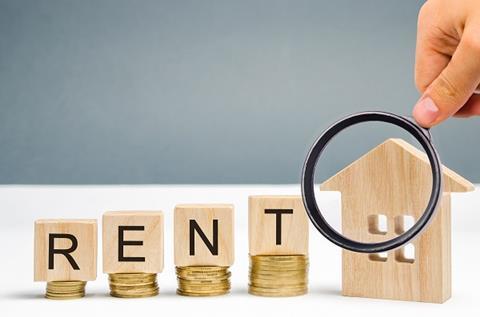Rent growth slowed for three quarters in a row
The gap between supply and demand in the rental market is showing gradual signs of improvement, according to Rightmove’s latest index.
Rents have been rising every three-months consecutively since the end of 2019. But, the pace of rent growth continues to slow and has now eased for three quarters in a row.
Supply is still very constrained, but Rightmove’s research reveals that the number of available properties to rent is currently 6% higher than last year.

During the first three months of 2023, the number of properties available to rent went up by 8% compared to the same period a year ago.
Competition between tenants has also eased by 2% compared with last year, but it is still more than double the level it was four years ago.
The number of available properties to rent is still 46% below what it was in 2019.
The gap between the number of properties available for rent and the level of demand continues to push rental prices up.
Average asking rents for new tenants outside of London have risen to yet another new record of £1,190 per calendar month.
While average asking rents in London have surpassed £2,500 for the first time to reach a new record.
However, there are signs that the speed of rent rises is slowing in the capital too, as this quarter’s rise of 0.9% is the smallest for two years.
“We have seen some early signs of improvement on squeezed supply levels this year,” said Rightmove’s housing expert, Tim Bannister.
“Though with no significant influx of new properties becoming available to rent currently on the horizon, the mismatch is set to continue for some time.
>>See also: Could build-to-rent become the ‘darling’ of housing delivery?
>>See also:PRS REIT hits 5,000-home milestone later than planned
“Although there are some early signs that the gap between supply and demand is starting to narrow a little, it will still feel very competitive for tenants trying to secure a home.”
However, Iwona Hovenko, Real Estate Analyst at Bloomberg Intelligence said the imbalance between rental supply and demand is likely to get worse in the near-term.
Hovenko said: “ “Unfortunately for tenants, the rental supply-demand imbalance is only likely to worsen in the near-term future, as smaller private landlords exit the sector due to high taxation, interest rates and the steep costs to bring their properties to at least EPC band C in the next few years.
“Shortage of qualified labour and the still-high prices of materials may make that job even tougher. Moreover, the same factors are also hitting the supply of new homes.”
The biggest gap between supply and demand is for terraced houses. There are four times as many tenants enquiring as there are properties of this type available to rent.










No comments yet